Many factors contribute to website usability: from straightforward navigation, responsiveness, and accessibility on different browsers to good readability and clear calls to action.
A usable website is key to high conversion rates. With confusing menus and illegible layout, you can forget about conversions – no one will ever trust a not user-friendly website. Do you want to make sure that your website is easy to use or you suspect some problems? If yes, you need website usability surveys!
What is a Website Usability Survey?
A website usability survey is a method of collecting feedback from website visitors to assess website usability. Visitors browsing your website are presented with a small survey asking about their thoughts on the website's usability.
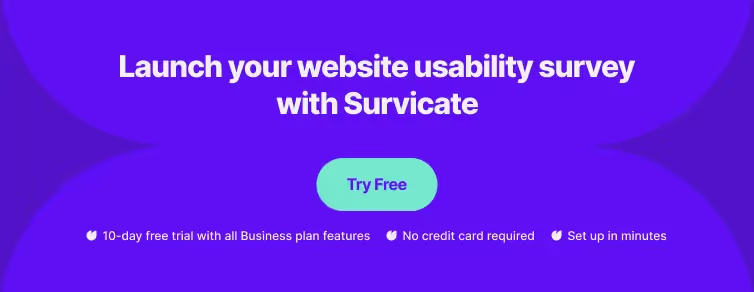
How Website Usability Surveys Help Create Better Websites
What are the elements that work well, and what do visitors like about your website? What problems do visitors face, and what causes them? What would they improve? Does the website look and work well on their devices?
Website usability surveys will help you find answers to all these questions. Collected insights will help you improve the usability of your website.
Making sure your visitors enjoy interacting with the website is one of the keys to securing high customer satisfaction ratings. Furthermore, if done well, it drives brand awareness, traffic, and – most importantly – it boosts conversion rates.
A Website Usability Survey Template by Survicate:
Answers will show you what looks good and what should be improved. To achieve the most reliable results, a website usability survey should be combined with quantitative analysis conducted with tools like Google Analytics. In GA, you can see which pages are underperforming (high exit rates, short visit duration, etc.).
Start with triggering a survey there to solve the most important problems. Combining qualitative and quantitative analysis will provide a holistic understanding of what is happening on your website and what visitors are doing.
Tip:
You can integrate Survicate with Google Analytics to see survey responses in GA. Here's more about our Google Analytics integration.
Website Usability Survey Questions
1. What task did you want to accomplish on this website?
Essentially – people come to your website for some purpose. Ask your visitors about their intentions on your landing page. Maybe you have chosen confusing keywords, or people didn't fully understand the nature of your services?
You can't expect users who came to your website by mistake or who have been lured to convert.
2. Were you able to find the information you were looking for on our website?
It's another website usability question that deals with customers' expectations. With the rising popularity of content marketing, delivering value and precisely targeted content is becoming increasingly essential.
If you promise something with your blog post (Let's say: "5 Ways to Lower Your Electricity Bills), make sure you deliver on the promise.
If someone is looking for help or Q&A, provide them the best way you can. You want to give the visitors all they need. If you manage to do that, they will leave your website with their need satisfied and are more likely to return.
3. How clear is our website?
Your customers don't know your services as well as you do. Be prepared that something obvious for you maybe be unclear to customers.
Are your visitors complaining about issues with the clarity of your website? Then you should consider usability testing and redesign. Listen to the voice of customers - they pay your bills.
4. How can we improve our website?
An open website usability question to crowdsource valuable tips to improve your website. There is always room for improvement, so website optimization is a never-ending, ongoing process.
But after dozens of tests, you can get stuck and get rid of all ideas that you can change on the website to improve its usability. So ask your visitors about it and turn their ideas into tests.
If your visitors can openly write what you can make better, you can expect to get interesting insights and surprising tips.
5. Why have you decided to exit our website?
There are many reasons why users leave your website. They might have accomplished what they wanted, got bored, or have not found what they were looking for.
This simple question can help you discover their reasons and act if it turns out that your website doesn't meet expectations. Suppose users exit after accomplishing their goals and are satisfied with your services – good for you!
Tip:
Use exit-intent surveys to trigger a survey when a visitor is about to leave the page.
How to Create Website Usability Survey in 3 Steps
Running a survey to assess website usability is nothing tricky. In fact, it takes only 3 steps in a survey to get an overview of what problems people encounter on your website. We suggest sending the following messages:
"Did you have any problems with website usability during your visit?"
A dead-simple question. Use skip logic to show a different next step to visitors who give a different answer. Those who answer negatively should see a thank-you message, and those whose response was YES should see the following message:
"Please describe it. You will help us improve our website."
Use the text field to collect users' stories on what problems they faced. And that's it. Even a few answers to these questions can help you significantly improve website usability. Just don't forget to add the last message:
"Thanks for your feedback!"
You don't need anything more to get an overview of your website's usability.
Mind you: Website surveys won't uncover all insights that can improve website usability. Pair the survey answers analysis with analyzing session recordings. The recordings will show you which pages users get lost on and which elements don't work as expected.
Also, if you can, consider running usability tests to find out how people who visit your website for the first time assess it and what frustrates them. Running those tests is especially valuable early when you're still working on website design and are not publicly available.
How to Run a Website Usability Survey
The best way to conduct a website usability survey is to use website surveys. They are easy to set up with the best website feedback tools. You can precisely choose who and when they see them to personalize messages.
A simple example: you can run a survey on a recently redesigned website to determine what people think of it and how they assess its usability.
Sometimes it turns out that people don't understand all novelties and are confused.
Also, you should consider running an exit survey on websites that report high bounce or exit rates (use Google Analytics to find them):
A high bounce rate often means that something there is not working as expected or visitors face problems and it causes them to leave.
When examining exit intent, start with pages that are most important to your business, like a registration form or checkout.
The results will show you what causes visitors to leave. Turn those answers into changes on the website and compare results (in Google Analytics and another survey).
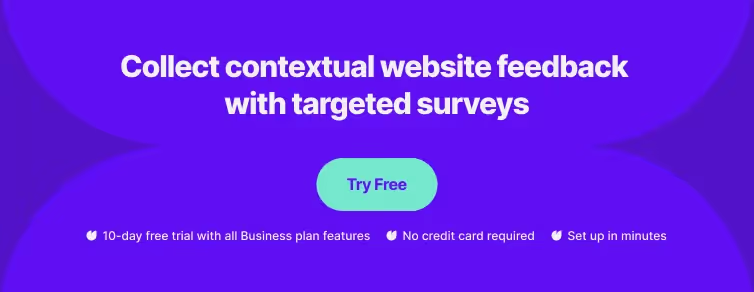
Summary
Running website usability surveys is a no-brainer that can lead you to improve your website significantly. If paired with session recordings, usability surveys can mostly replace usability tests. With insights about user experience collected directly from customers, you can quickly eliminate pain points in the conversion process. To start collecting invaluable website visitor insights, sign up for Survicate's 10-day free trial and get access to all Business plan features today.

.avif)







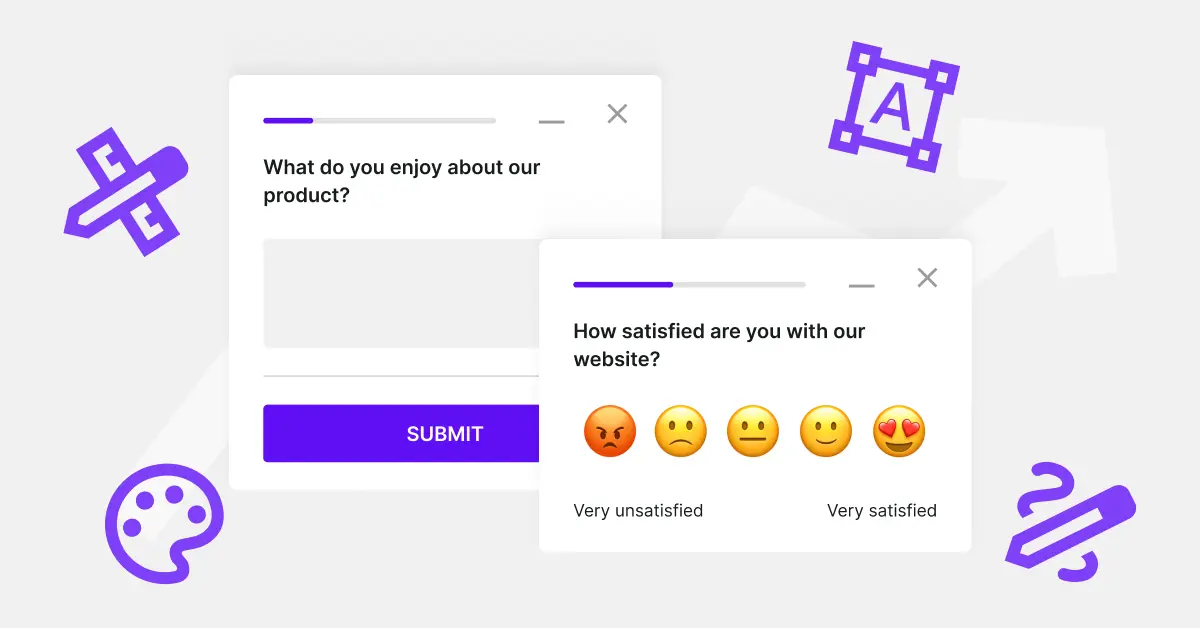
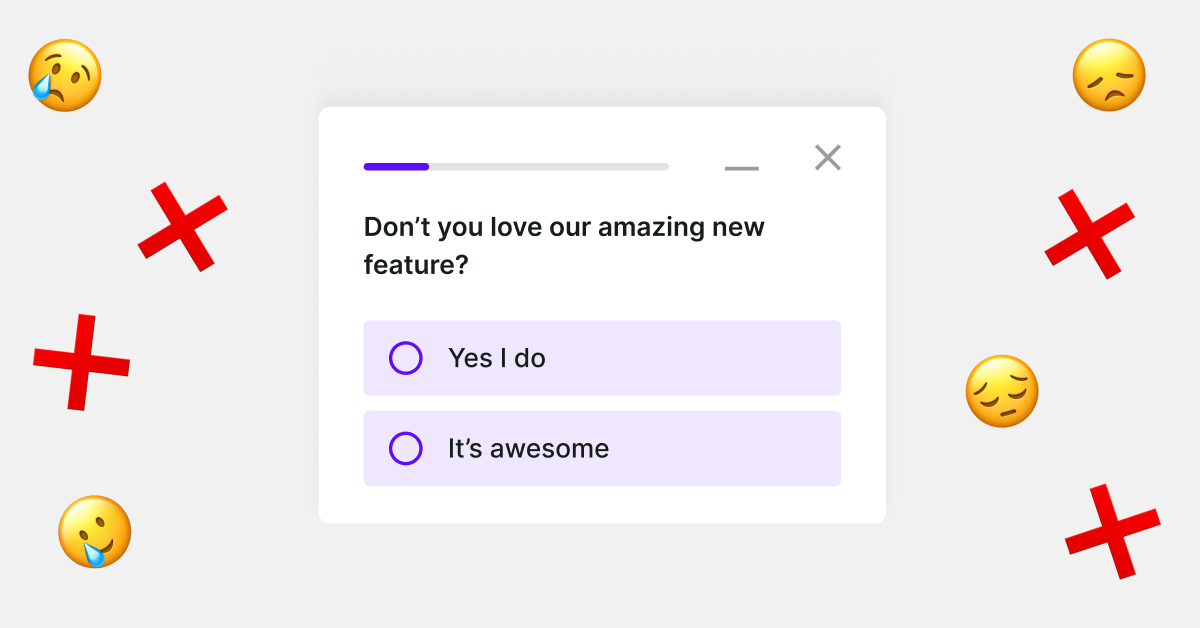
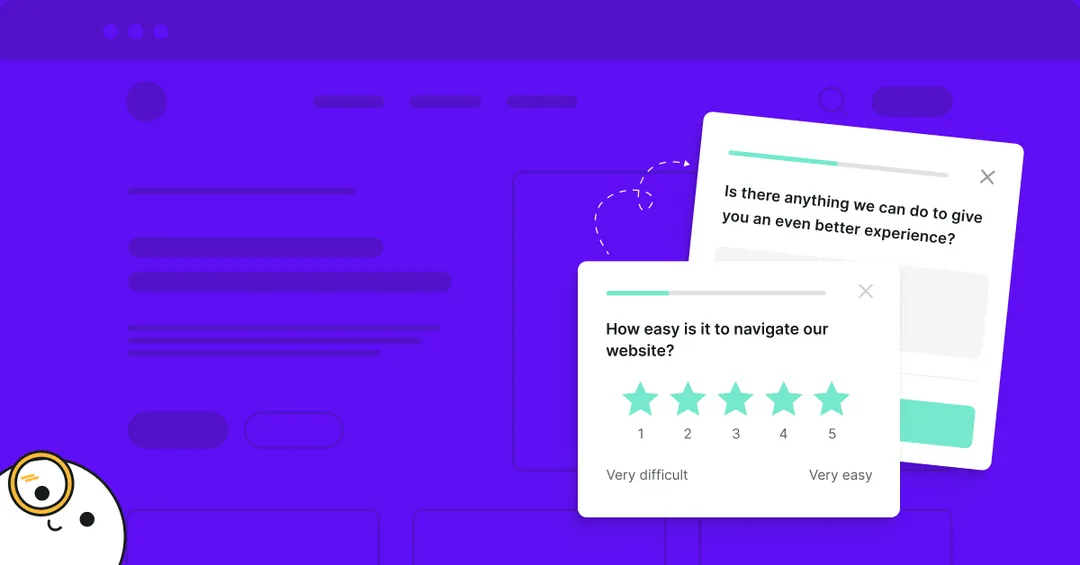
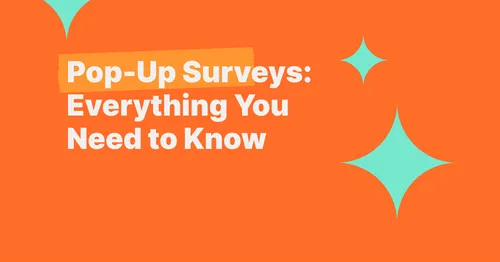

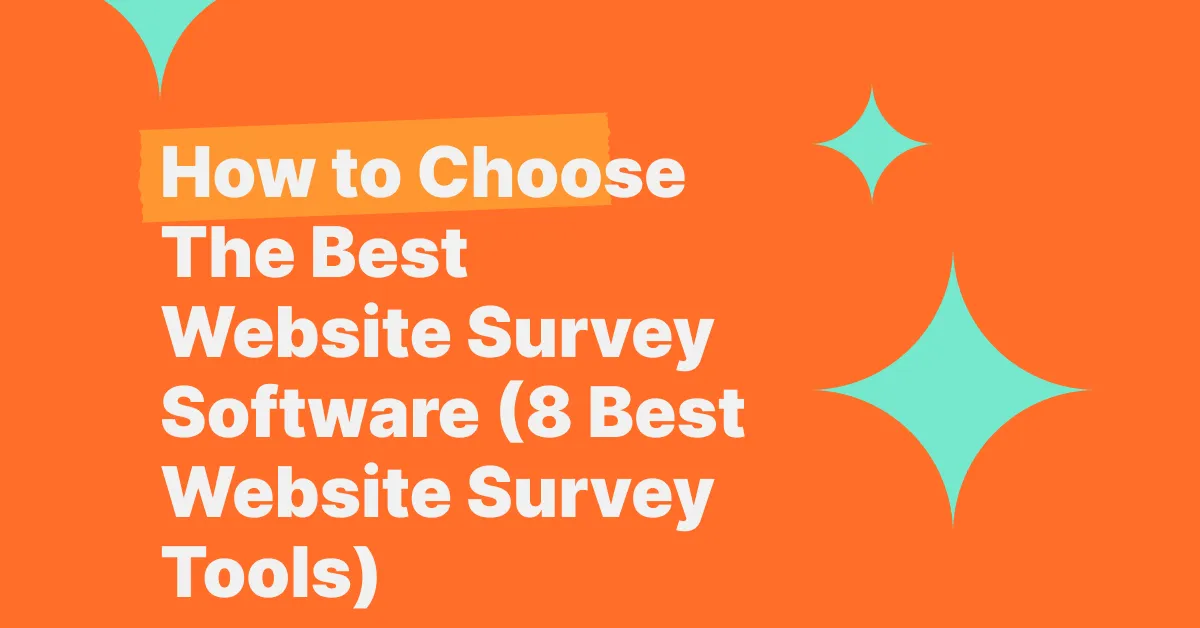
.svg)

.svg)



